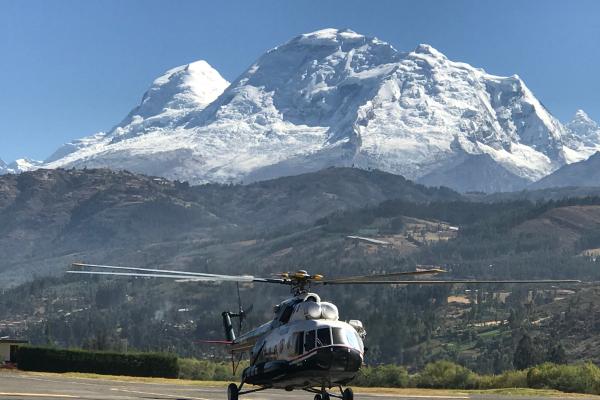Glaciological and Geophysical Perspectives on Tropical Ice from a Scientific Survey of Mt. Huascarán

A new study published by Cambridge University Press 's Journal of Glaciology presents critical findings from a 2019 expedition to Nevado Huascarán, Peru's highest mountain and home to one of the world's most vital tropical glaciers. The international team of scientists was led by Stanislav Kutuzov, a researcher at the Byrd Center, and Dr. Lonnie G. Thompson, Senior Research Scientist and Distinguished University Professor in the School of Earth Sciences. The authors include Dr. John F. Bolzan; Ph.D. candidate Forrest Schoessow; and Russian scientists Ivan Lavrentiev and Gleb Chernyakov.
The expedition team conducted glaciological and geophysical surveys at both the summit and col of Huascarán. Using ground-penetrating radar and ice core drilling, the researchers measured ice thickness, analyzed bedrock topography, and collected climate data preserved in the glacier. Four ice cores were extracted during the mission, with borehole temperature and density measurements indicating that the ice at the col is frozen to bedrock and suitable for paleoclimate reconstruction.
The study found that ice thickness at the Huascarán col ranges from 117 to 212 meters, with an average of 170 meters. At the summit, measurements ranged from 68 to 79 meters. These results significantly exceed existing global model estimates, which tend to underestimate ice thickness in high-altitude accumulation zones. The findings demonstrate that commonly used modeling methods may not accurately capture ice distribution in complex mountain environments, particularly near ice divides.
The research also documented complex internal glacier structures, including buried crevasses, avalanche debris layers, and isochronal stratigraphy. These features provide critical information for selecting optimal drilling sites and interpreting long-term climate records preserved in the ice.
A 3D full-Stokes glacier model developed as part of the study helped assess ice flow dynamics and confirmed the minimal upstream influence on ice-core stratigraphy. This supports the reliability of the paleoclimate record recovered from the cores, which extends beyond the Holocene.
The study highlights the importance of direct field measurements for validating and improving glacier models. The data gathered from Huascarán contribute to a better understanding of tropical glacier behavior, inform water resource assessments, and aid in the interpretation of environmental change over thousands of years.
With Peru containing approximately 70% of the world's tropical glaciers, these findings represent a valuable addition to the global climate and glaciological research body. Learn more by visiting Journal of Glaciology.
